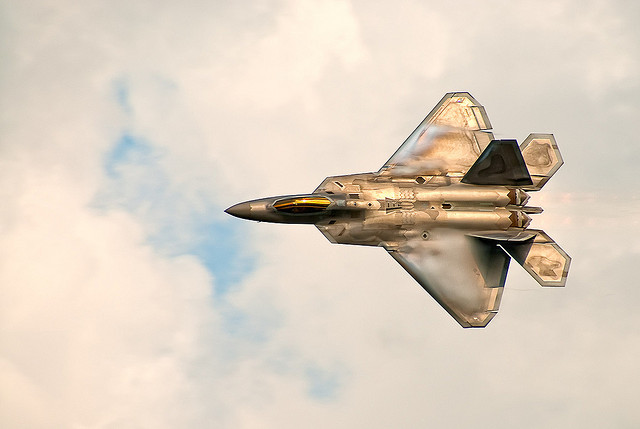Sea State
Last Thursday, the US Navy’s Naval Intelligence Office released an unclassified report on the Chinese Navy (PLAN), the first in six years. The report provides the public with a wider analysis of issues such as China’s topical maritime claims in the South China Sea (SCS). The report’s major revelations include a projection that, by the end of 2015, the Chinese Coast Guard (CCG) will be 25% larger than it was three years ago, and that the CCG has more ships than Japan, Vietnam, Indonesia, Malaysia and the Philippines combined. It also reports PLAN’s deployment of the YJ-18—a new-generation supersonic anti-ship cruise missile—with the potential to seriously threaten the defences of US and allied ships.
Still on PLAN-related news, China has recently launched a second modified Type 904A supply ship. It’s more than just a flight deck: the vessel has a hangar too, which improves its aviation support facilities. Chinese media has reported that the ship will contribute to troop transport and logistics supply to barracks in the SCS.
And finally, The Diplomat has published an interesting article on an unconventional approach to resolving disputes in the SCS. According to Admiral Dennis Blair, the former director of national intelligence and commander-in-chief of the US Pacific Command, an ‘International Conference on the South China Sea’ would help ‘establish clarity on how to resolve conflicting claims’ by utilizing a two-step process. First, a conference would be held involving the SCS claimants with the objective of creating a rough international solution, and second, the claimant nations would then adopt the results of the conference as if they were the ‘new ground reality’ in the SCS. The plan would also be legitimised and enforced by the international community.
Flight Path
According to a new study, the future of air warfare looks set to include more bombers. The US Center for Budgetary and Strategic Assessments says that America’s future war planes will look more like stealthy long-range bombers than sleek, fast and manoeuvrable fighters. The study suggests that the traditional fighter attributes of speed and manoeuvrability are less important to success today and into the future. The conclusion raises questions about the utility of a sixth generation fighter that will be a marginally-improved F-22 with limited short-range capability.
And it seems that the bombers of the future will have upgradability (also known as ‘modularity’ or ‘spiral development’) written into their design specifications. Recent revelations by senior Pentagon officials suggest the long-range strike bomber will be made to accommodate incremental improvement over the years, providing flexibility to counter future threats for the first time.
Last week Canada joined the airstrike campaign in Syria. Canadian Prime Minster Stephen Harper received approval from the parliament to launch airstrikes in Syria, noting that Canada would inform the Syrian government of its operations over the country, but not seek formal permission. Defence One has provided an excellent breakdown of the 5,548 Coalition airstrikes in Syria against ISIS since 2014, available here in easy-to-read graphs. (See also ASPI’s Strategy paper on the first 100 days of airstrikes against ISIS,)
Japan’s shift from ‘passive ‘to ‘proactive’ defence strategy is playing out in space. In January this year Japan finalised plans to launch its 10-year national security space build-up strategy mandated in its 2013 National Security Strategy. In case you missed it, the Basic Plan integrates space policy into national security strategy and seeks to enhance the US-Japan alliance. The program is designed to enhance Japan’s situational awareness and reconnaissance in space, and its space-based missile early warning capabilities.
Rapid Fire
Pakistan’s parliament has rejected a request to send air, naval and ground support to assist Saudi Arabia in its campaign against Houthi rebels in Yemen. The request comes as Saudi Arabia remains hesitant to send in any ground support of their own. Over at Al Jazeera, Gamal Gasim argues why a Coalition military ground incursion would be a poor strategic choice given other relative strengths, such as political and diplomatic avenues. Pakistan justified the move as an attempt to remain impartial so that it might play a diplomatic role in the future, a decision that’s caused a rift with its allies in the Gulf. The US has taken a different approach, announcing an increase in military aid to the Saudi campaign last Friday
This week will see the arrival of around 1,500 US Marines in Darwin in the fourth rotation coming out of a deal to increase US Marine presence in Australia. Brendan O’Connor of the University of Sydney warns that this isn’t a ‘deal with Obama’ and that Australian acceptance of an increased presence may change with a change in US Presidency.
Continuing from previous discussions on gender equality in the US military, Juliet Eilperin from The Washington Post, discusses the need for institutional change regarding transgender people in the military. Back at home, the ADF recently launched a campaign aimed at recruiting more females into the services.
Finally over at VICE News, read the first in a three-part series that follows Kaj Larsen—a former US Navy Seal—as he embeds with the Nigerian military as they battle Boko Haram.


